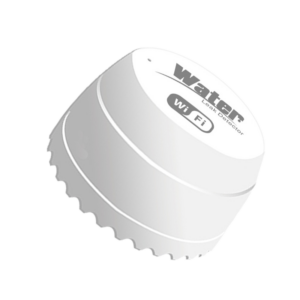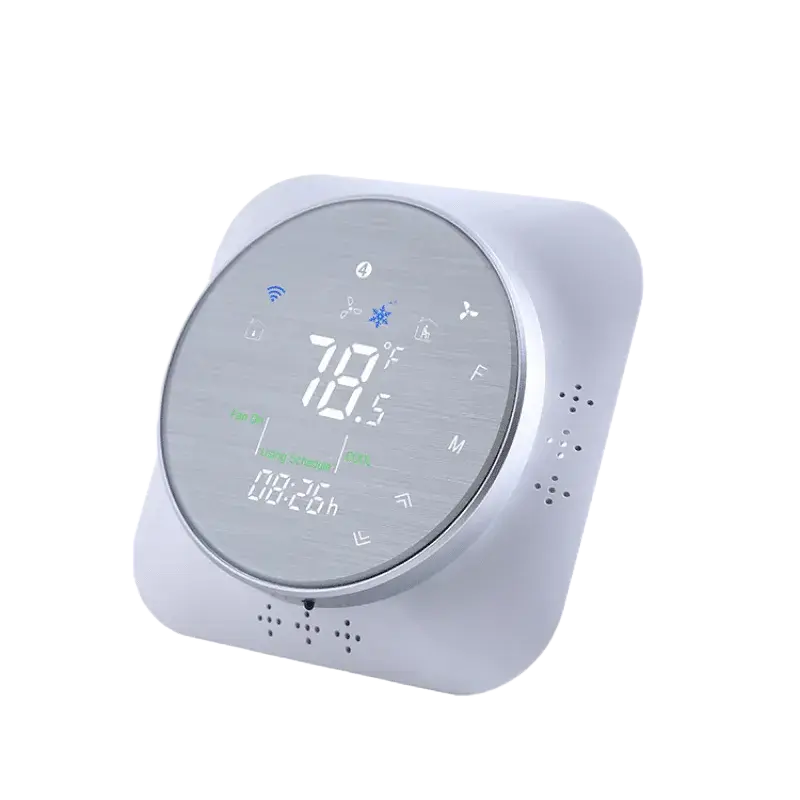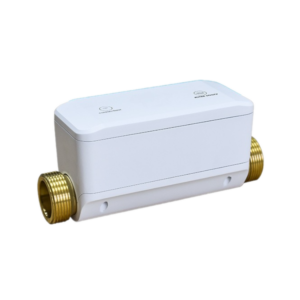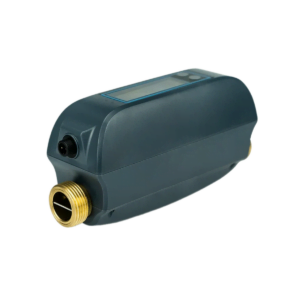With the increasing integration of solar panels, battery storage, EV charging stations, and home appliances, homeowners often struggle to get a clear picture of their energy flow. Understanding where energy is being generated, stored, and consumed is crucial for optimizing efficiency and reducing electricity costs.
A smart energy meter provides real-time monitoring of:
✅ Grid electricity usage – Track power drawn from the grid.
✅ Solar generation – Monitor how much solar power is being produced.
✅ Battery storage status – See energy stored and discharged from batteries.
✅ EV charging consumption – Understand how much energy your electric vehicle is using.
✅ Home appliance power usage – Identify energy-hungry devices.
In this guide, we’ll explain:
🔹 How to install smart meters across your home energy system
🔹 How to structure energy monitoring for full visibility
🔹 How AI-powered smart meters like Grus Split-Phase Electric Monitor can optimize energy use
1. Understanding the Energy Flow in a Smart Home
Before installing a smart energy meter, it’s essential to understand the energy flow in a modern home that integrates:
1️⃣ The Power Grid – Provides electricity when solar power is insufficient.
2️⃣ Solar Panels – Generate renewable energy during the day.
3️⃣ Battery Storage – Stores excess solar power for nighttime use.
4️⃣ EV Charging Station – Consumes significant energy for vehicle charging.
5️⃣ Home Appliances – Various devices that require energy for daily operations.
1.1 Energy Flow Diagram for a Smart Home with Solar & Battery Storage
graph TD; %% Top Section - Power Sources A[Power Grid] -->|CT1: Measures Import/Export Power| B[Main Panel] F[Solar Inverter] -->|CT2: Measures Solar Output| B F -->|CT6: Charges Battery| E[Battery Storage] E -->|CT3: Discharges Power| B %% Center - Main Panel as Distribution Hub B -->|CT5: Tracks Total Home Power| C[Home Appliances] B -->|CT4: EV Charging Load| D[EV Charger] %% Labels for Phase Type B -.->|Split-Phase 240V (L1, L2, Neutral)| H[Split-Phase System] B -.->|Single-Phase 120V (L1, Neutral)| I[Single-Phase System]
CT Clamp Placement & Line Descriptions
| CT Clamp | Installation Line | Monitors | Purpose |
|---|---|---|---|
| CT1 | Between Grid and Main Panel | Grid Power Import/Export | Tracks how much electricity is drawn from or sent back to the grid |
| CT2 | Between Solar Inverter and Main Panel | Solar Power Output | Measures real-time solar generation |
| CT3 | Between Battery and Main Panel | Battery Discharge | Tracks how much stored energy is being used |
| CT4 | Between EV Charger and Main Panel | EV Charging Load | Identifies energy used by the electric vehicle |
| CT5 | Between Main Panel and Home Loads | Total Home Consumption | Tracks overall household power usage |
| CT6 | Between Solar Inverter and Battery Storage | Battery Charging | Measures how much solar energy is stored in the battery |
🔹 Key Insight: A smart energy meter (G) should be positioned to monitor all major energy sources and their flow to and from the home.
2. Where to Install Smart Energy Meters for Full Energy Visibility
To get a complete view of energy consumption and generation, smart meters should be installed in strategic locations:
2.1 Recommended Smart Meter Installation Points
| Location | Purpose | What It Monitors | Recommended Meter |
|---|---|---|---|
| Grid Connection (Main Panel) | Track electricity imported/exported to the grid | Grid power usage & net metering | Split-Phase Electric Monitor |
| Solar Inverter Output | Measure solar energy production | Real-time solar generation | Clamp-On Smart Meter |
| Battery Storage Input/Output | Monitor charge/discharge cycles | Battery state of charge & usage | Bidirectional Power Meter |
| EV Charging Station | Track EV charging consumption | Charging energy and cost per session | Dedicated EV Energy Monitor |
| Home Appliance Panel | Identify energy-hungry devices | Individual appliance usage | Smart Plug Meters or Subpanel Monitor |
💡 Best Solution: The Grus Split-Phase Electric Monitor can monitor grid power, solar, battery, and home consumption in real-time.
3. Step-by-Step Smart Energy Meter Installation Guide
3.1 Installing a Smart Meter at the Grid Connection (Main Panel)
📌 Purpose: Measure total power imported from and exported to the grid.
Installation Steps:
1️⃣ Turn off the main circuit breaker for safety.
2️⃣ Open the electrical panel and identify the main power lines.
3️⃣ Attach clamp sensors around the incoming grid power cables.
4️⃣ Connect sensors to the smart energy monitor.
5️⃣ Secure the device and restore power.
6️⃣ Pair with a smart home app for real-time tracking.
3.2 Installing a Smart Meter for Solar Panel Output
📌 Purpose: Track solar generation in real-time to optimize usage.
Installation Steps:
1️⃣ Locate the output wires from the solar inverter.
2️⃣ Attach a smart meter to measure DC or AC power output.
3️⃣ Integrate the meter with home energy monitoring software.
4️⃣ Analyze data to track solar efficiency and adjust power consumption.
3.3 Installing a Smart Meter for Battery Storage
📌 Purpose: Monitor energy stored and discharged from home batteries.
Installation Steps:
1️⃣ Connect a bidirectional smart meter to the battery system.
2️⃣ Attach clamp sensors to both charge and discharge lines.
3️⃣ Monitor battery efficiency via the smart meter dashboard.
3.4 Installing a Smart Meter for EV Charging
📌 Purpose: Track EV charging power consumption to optimize electricity usage.
Installation Steps:
1️⃣ Install a smart energy monitor on the EV charging circuit.
2️⃣ Configure time-based charging to avoid peak electricity rates.
3️⃣ Use the smart meter’s dashboard to track per-session energy costs.
graph TD A[Smart Energy Meters] -->|Monitor Usage| B[Grid] A -->|Monitor Solar Output| C[Solar Inverter] A -->|Monitor Battery Charge/Discharge| D[Battery Storage] A -->|Monitor EV Charging| E[EV Charger] A -->|Monitor Home Appliances| F[Smart Home Dashboard]
🔹 Key Insight: Installing multiple smart meters ensures real-time insights across all major energy sources.
Next Steps
Now that we understand where and how to install smart energy meters, in Part 2, we’ll discuss:
📌 How to analyze smart meter data for energy optimization
📌 Using AI-powered insights for efficiency improvements
📌 **Why Grus Split-Phase Electric Monitor is a top choice for smart home energy tracking
4. How to Analyze Smart Meter Data for Energy Optimization
Once your smart energy meters are installed across the grid, solar panels, battery storage, EV charging station, and household appliances, the next step is understanding and utilizing the data effectively.
By analyzing smart meter data, you can:
✅ Track power generation vs. consumption – See if solar meets your needs.
✅ Optimize battery usage – Ensure stored power is used efficiently.
✅ Reduce peak demand costs – Shift heavy loads to off-peak hours.
✅ Prevent unnecessary energy waste – Identify standby power drain.
4.1 Understanding Smart Meter Data from Different Sources
Each energy source and load contributes unique data points. Below is an overview of what to monitor:
| Energy Source | Key Metrics to Track | Optimization Strategy |
|---|---|---|
| Grid Power | kWh consumed, time-of-use costs | Shift loads to off-peak hours |
| Solar Panels | kWh generated, real-time production | Maximize self-consumption, store excess power |
| Battery Storage | Charge/discharge cycles, SOC % | Store excess solar, discharge during peak rates |
| EV Charging | kWh per session, charging cost | Schedule charging during cheap electricity hours |
| Home Appliances | Individual power usage (W) | Identify & reduce high-energy devices |
💡 Example: If your battery storage data shows low charge levels at night, you may need to adjust the charging schedule to store excess solar power during the day.
4.2 Visualizing Energy Data for Better Decision-Making
A smart energy monitoring dashboard consolidates data from multiple meters to provide a clear picture of home energy flow.
graph TD; A[Smart Meters] -->|Collect Data| B[Energy Monitoring System] B -->|Generates Reports| C[Real-Time Dashboard] C -->|Suggests Energy Optimization| D[User Adjustments]
🔹 Key Insight: A well-structured dashboard helps homeowners analyze trends, identify inefficiencies, and automate power optimization.
5. AI-Powered Insights for Smart Energy Efficiency
Modern smart meters use AI-driven analytics to automatically optimize energy consumption.
5.1 AI-Based Predictive Energy Management
Using machine learning algorithms, AI can:
✅ Forecast solar generation & optimize battery storage
✅ Detect unusual power usage (e.g., faulty appliances)
✅ Automatically adjust smart home devices based on energy demand
sequenceDiagram participant Smart Meter participant AI Energy System participant Smart Home Devices participant User Smart Meter ->> AI Energy System: Sends real-time energy data AI Energy System ->> Smart Home Devices: Optimizes power distribution AI Energy System ->> User: Sends energy-saving recommendations User ->> AI Energy System: Adjusts energy preferences
💡 Example: If AI detects high grid power usage during peak hours, it can automatically switch to battery storage to reduce costs.
5.2 Automating Energy Efficiency with Smart Home Integration
By integrating smart meters with home automation platforms, homeowners can create energy-efficient routines:
| Automation Rule | Action | Result |
|---|---|---|
| If solar power > home demand | Charge battery | Store excess solar energy |
| If battery < 20% | Draw from grid during off-peak hours | Minimize expensive peak-hour power use |
| If EV charging costs are high | Delay charging to off-peak hours | Reduce electricity bill |
| If appliance power draw is high | Send alert or auto-turn off | Prevent energy waste |
🔹 Key Insight: AI-powered automation reduces energy costs while maintaining comfort.
6. Why Grus Split-Phase Electric Monitor is the Best Smart Energy Solution
For complete energy monitoring across grid power, solar, battery storage, EV charging, and home appliances, the Grus Split-Phase Electric Monitor provides:
✔ Real-Time Energy Tracking – Instant data on power usage & generation.
✔ Appliance-Level Monitoring – Identify and optimize high-energy devices.
✔ AI-Based Energy Recommendations – Reduce waste & cut electricity bills.
✔ Easy Installation – Non-invasive, clamp-on design.
✔ Integration with SmartThings & Home Assistant – Automate energy efficiency.
graph TD; A[Grus Smart Meter] -->|Monitors Grid & Solar| B[Real-Time Energy Dashboard] A -->|Optimizes Battery Storage| C[Smart Home System] A -->|Tracks Appliance Power Usage| D[User Reports & Alerts]
🚀 Why Choose Grus?
- Saves up to 25% on electricity bills
- Provides deeper energy insights than utility meters
- Seamlessly integrates with existing smart home setups
👉 Get the Grus Split-Phase Electric Monitor and take control of your home energy today!
A Smarter Way to Manage Home Energy
With a properly installed smart energy meter system, homeowners can track, analyze, and optimize their entire energy ecosystem.
Key Takeaways:
✅ Strategically install smart meters for grid, solar, storage, EV charging, and home loads.
✅ Use real-time monitoring to understand energy usage patterns.
✅ Leverage AI-based automation for cost savings & efficiency.
✅ The Grus Split-Phase Electric Monitor is an all-in-one solution for comprehensive energy management.🚀 Future-proof your home’s energy system today!



